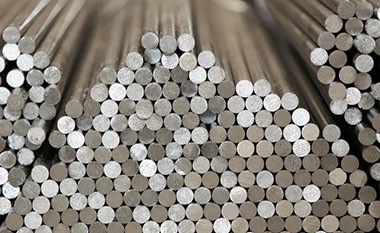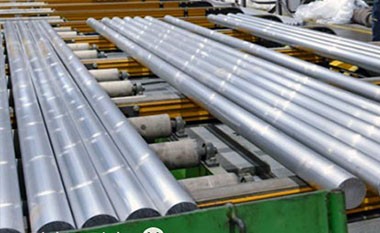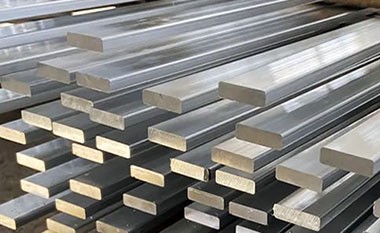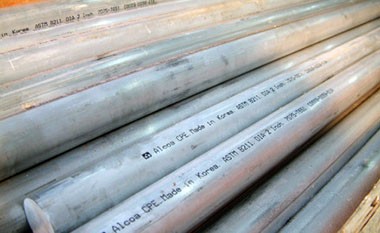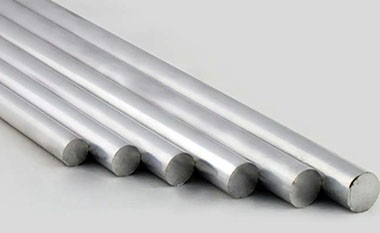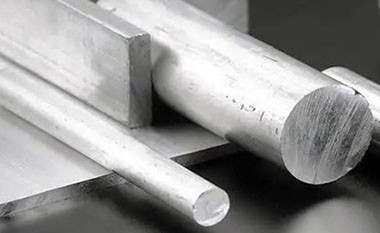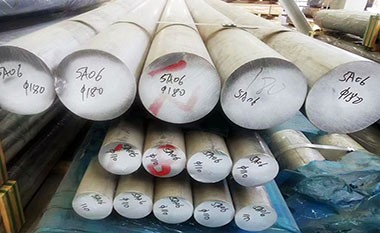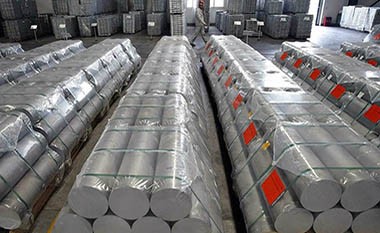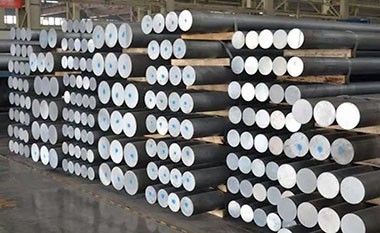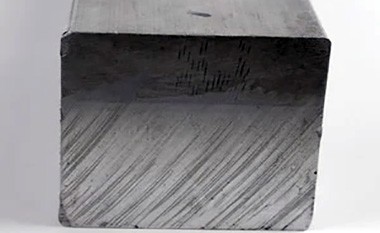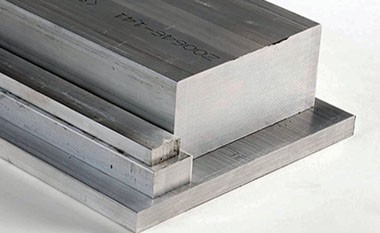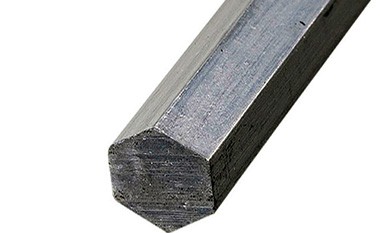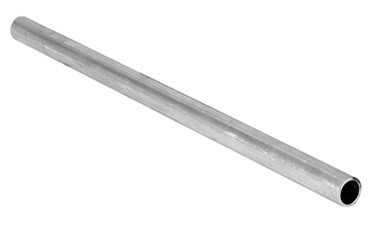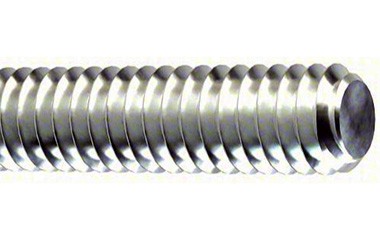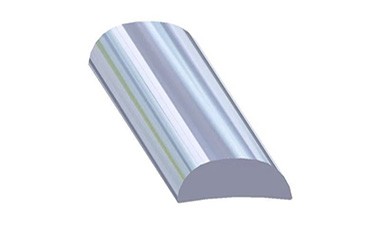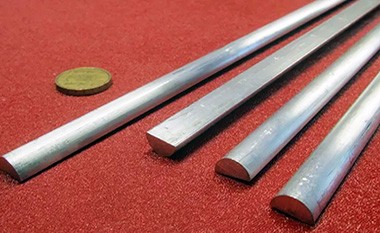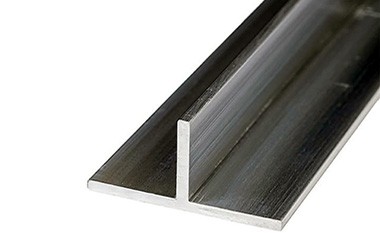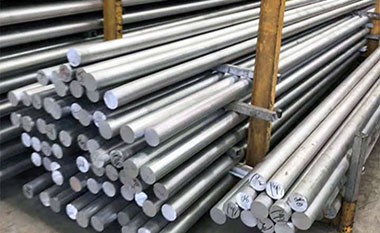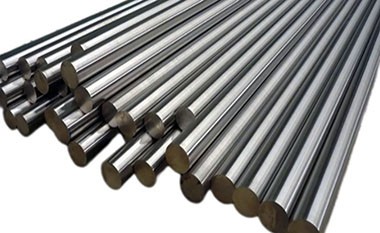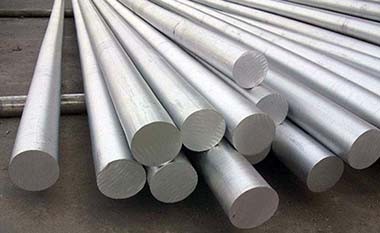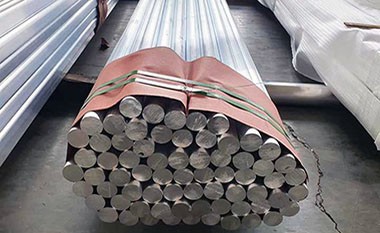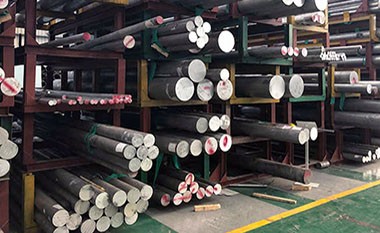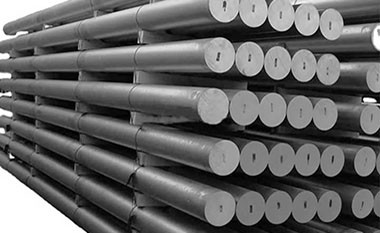6061 Aluminum Bar
6061 aluminum bar is an alloy mainly composed of magnesium and silicon. It belongs to heat-treatable alloys and possesses excellent formability, weldability, and machinability, maintaining good processing performance even after annealing. 6061 T651 is the main form of 6061 alloy, produced through heat treatment and pre-stretching processes, featuring high quality and good mechanical properties.
In 6061 aluminum alloy, the addition of manganese (Mn) and chromium (Cr) can effectively neutralize the negative effects of iron, enhancing the overall performance of the alloy. Additionally, small amounts of copper (Cu) or zinc (Zn) may be added to improve the strength of the alloy without significantly reducing its corrosion resistance. In conductive materials, adding a small amount of copper can also offset the negative effects of titanium (Ti) and iron on conductivity. To refine the grain structure and control the recrystallization organization, zirconium (Zr) or titanium (Ti) is typically added. Lead (Pb) and bismuth (Bi) can also be used as alloying elements to improve machinability.
6061 Aluminum Bar Characteristics
- Excellent machining performance: Easily machined and formed, suitable for complex-shaped parts.
- Superior welding characteristics: Offers good weldability, suitable for high-quality welding connections.
- Strong electroplating capability: Suitable for electroplating treatment with good surface finishing.
- Good corrosion resistance: 6061 aluminum alloy has strong resistance to most environments, making it suitable for outdoor and humid conditions.
- High toughness: Maintains good toughness after cooling or heat treatment, reducing the risk of brittle fracture during use.
- No deformation after processing: Maintains a stable shape during processing, reducing complexity in subsequent operations.
- Dense and defect-free material: 6061 T651 aluminum alloy is compact with almost no defects, ensuring excellent performance.
- Easy to polish: High surface finish allows for subsequent polishing and surface treatments.
- Easy to color: Can form a uniform anodized film after anodizing treatment, facilitating coloring and decoration.
- Excellent oxidation effect: Treated surfaces can effectively enhance wear resistance and corrosion resistance.
6061 Aluminum Bar Specifications
- Available shapes: Flats, squares and rounds
- Tempers: T6, T651, T6511
- Specifications: ASTM B211, AMS 4115, AMS 4116, AMS 4117, AMS 4128, AMS-QQ-A-225/8 & ASTM B221, AMS4150, AMS 4160, AMS 4161, AMS-QQ-A-200/8
HC Aluminum hot selling aluminum 6061 bar products
-
6061 Round Bar
A cylindrical bar made from 6061 aluminum alloy, known for its good mechanical properties and weldability.
-
6061 T6 Round Bar
A heat-treated version of 6061 round bar, offering increased strength and hardness.
-
6061 Aluminum Rod
Similar to the round bar, this is a cylindrical shape of 6061 aluminum often used for machining and fabrication projects.
-
6061 T6 Aluminum Rod
A heat-treated rod from the 6061 alloy, providing enhanced strength for applications requiring high performance.
-
6061 T6 Aluminum Round Bar
A specific designation for a round bar that has undergone T6 heat treatment, enhancing its mechanical properties.
-
6061 T4 Round Bar
A round bar in the T4 temper, which has been solution heat-treated and naturally aged, offering good corrosion resistance and moderate strength.
-
6061 Aluminum Filler Rod
A filler rod made from 6061 aluminum, used for welding applications to add material to a weld joint.
-
6061 Aluminum Welding Rod
Similar to a filler rod, specifically designed for use in welding processes involving 6061 aluminum.
-
6061 Aluminum Welding Wire
Wire made from 6061 aluminum used in welding processes, typically for TIG welding.
-
6061 T651 Round Bar
A specific variation of the 6061 round bar that has been treated to T651 specifications, offering optimal strength and dimensional stability.
-
6061 TIG Rod
A rod made from 6061 aluminum used in Tungsten Inert Gas (TIG) welding processes.
-
Filler Metal for 6061 Aluminum
Refers to the materials (like rods or wires) specifically used to weld 6061 aluminum, ensuring compatibility and strength.
-
6061 Aluminum Flat Bar
A flat, rectangular bar made from 6061 aluminum, used in various structural and fabrication applications.
-
6061 T6 Aluminum Bar
A bar made from 6061 aluminum alloy in T6 temper, known for its high strength and good corrosion resistance.
-
Aluminum Flat Bar 6061
A flat bar made of 6061 aluminum, used in various structural and fabrication applications.
-
6061 T6 Aluminum Flat Bar
A flat bar made from 6061 aluminum in the T6 temper, providing enhanced strength.
-
6061 Aluminum Rectangular Bar
A rectangular-shaped bar made from 6061 aluminum, used in various applications requiring specific dimensions.
-
6061 Aluminum Square Bar
A square-shaped bar made from 6061 aluminum, often used in structural applications.
-
6061 Aluminum T Bar
A T-shaped bar made from 6061 aluminum, used in structural applications and framing.
-
6061 Aluminum Bus Bar
A bar used for electrical applications, made from 6061 aluminum, typically used to conduct electricity.
-
6061 Aluminum Hex Bar
A hexagonal-shaped bar made from 6061 aluminum, used in various applications requiring hexagonal profiles.
-
6061 Extruded Aluminum Bar
A bar that has been shaped through the extrusion process, made from 6061 aluminum, allowing for complex profiles.
-
6061 T4 Bar
A bar made from 6061 aluminum alloy in the T4 temper, providing moderate strength and good corrosion resistance.
-
6061 T6511 Aluminum Bar
A variant of the 6061 aluminum bar that has been processed to T6511 specifications, offering enhanced strength and stability.
-
Aluminum 6061 Flat Bar
Another term for a flat bar made from 6061 aluminum alloy, often used in construction and manufacturing.
-
Aluminum Rectangle Bar 6061
6061 aluminum rectangle bar offers a good strength-to-weight ratio, above average corrosion resistance, good machinability, and excellent weldability.
6061 Aluminum Bar Typical Chemical Composition
| Weight % | Si | Fe | Cu | Mn | Mg | Cr | Zn | Ti | Each | Total |
| Minimum | 0.40 | 0.15 | 0.80 | 0.04 | ||||||
| Maximum | 0.80 | 0.70 | 0.40 | 0.15 | 1.20 | 0.35 | 0.25 | 0.15 | 0.05 | 0.15 |
Remainder Aluminum
6061 Aluminum Bar Typical Mechanical Properties
| Temper | Tensile | Hardness | ||||
| Ultimate | Yield | Elongation | Brinell | |||
| KSI | MPA | KSI | MPA | % | ||
| T6, T651 | 45 | 310 | 21 | 145 | 25 | 65 |
Applications of 6061 Aluminum Bar
The representative applications of 6061 aluminum bar include aerospace fasteners, electrical fixture components, and communication fields. It is also widely used in automation machinery parts, precision machining, mold manufacturing, electronics, and precision instruments, as well as SMT and PCB soldering carriers, among others.
1. Aerospace Fasteners
Due to its excellent strength and corrosion resistance, 6061 aluminum bar is commonly used to manufacture fasteners and structural components in spacecraft. These fasteners must possess high strength and lightweight characteristics to meet the demands of extreme environments in aerospace applications. Additionally, the good weldability of 6061 aluminum alloy makes it convenient for manufacturing complex aerospace structures.
2. Electrical Fixture Components
In the electrical industry, 6061 aluminum bar is used to manufacture various fixture components, such as brackets and housings. These electrical fixtures need to have good thermal conductivity for effective heat dissipation. The superior thermal performance and good machinability of 6061 aluminum alloy make it a commonly used material choice in the electrical sector.
3. Communication Field
In communication equipment, 6061 aluminum bar is widely used in components like antenna mounts and signal transmission structures. These components require corrosion resistance and high mechanical strength to ensure the equipment operates normally under various environmental conditions. Moreover, the lightweight characteristics of 6061 aluminum help reduce the overall weight of the equipment.
4. Automation Machinery Parts
In the automation field, 6061 aluminum bar is used to manufacture various mechanical parts, such as gears, brackets, and connectors. These parts require high precision and wear resistance, and the mechanical properties of 6061 aluminum alloy allow it to operate stably in automation equipment for extended periods.
5. Precision Machining
6061 aluminum bar has extensive applications in precision machining, such as machining complex parts and molds. Its excellent cutting performance and stable physical properties make it perform well in CNC machining and milling processes, meeting strict tolerance requirements.
6. Mold Manufacturing
In the mold manufacturing industry, 6061 aluminum bar is commonly used to make aluminum alloy molds, especially in hot runner molds and cooling systems. The wear resistance and excellent thermal conductivity of 6061 aluminum alloy make it an ideal material for mold manufacturing, helping to improve production efficiency and the lifespan of the molds.
7. Electronics and Precision Instruments
6061 aluminum bar is also widely used in the housings and structural components of electronic products and precision instruments. Its excellent strength and corrosion resistance effectively protect internal components, ensuring the long-term stability of the equipment.
6061 Aluminum Bar Faqs
-
Is 6061 aluminum stronger than steel?
When comparing tensile strength, 6061 aluminum is not stronger than steel. Steel typically has a higher tensile strength than aluminum alloys, including 6061. However, 6061 aluminum has a good strength-to-weight ratio, making it suitable for applications where weight reduction is critical. Although it may not be as strong as steel, it is often chosen for its lightweight, corrosion resistance, and ease of fabrication.
-
What is extruded 6061 aluminum bar stock?
Extruded 6061 aluminum bar stock refers to aluminum bars formed through the extrusion process using 6061 aluminum alloy. During the extrusion process, the aluminum alloy is heated and forced through a die to create elongated shapes, such as bars or profiles. This process allows for precise dimensions and uniform cross-sections. Extruded 6061 aluminum bars are widely used in various applications due to their excellent mechanical properties and machinability, including structural components, frames, and mechanical parts.
-
Is 6061 aluminum hard to weld?
6061 aluminum can be welded, but careful consideration is needed due to its alloying elements and heat treatment. While it can be welded, achieving strong welds may require preheating and post-weld heat treatment to avoid issues like cracking in the heat-affected zone or loss of strength. Proper welding techniques and filler materials (such as 4047 or 5356) are also important for ensuring the integrity of the welds.

